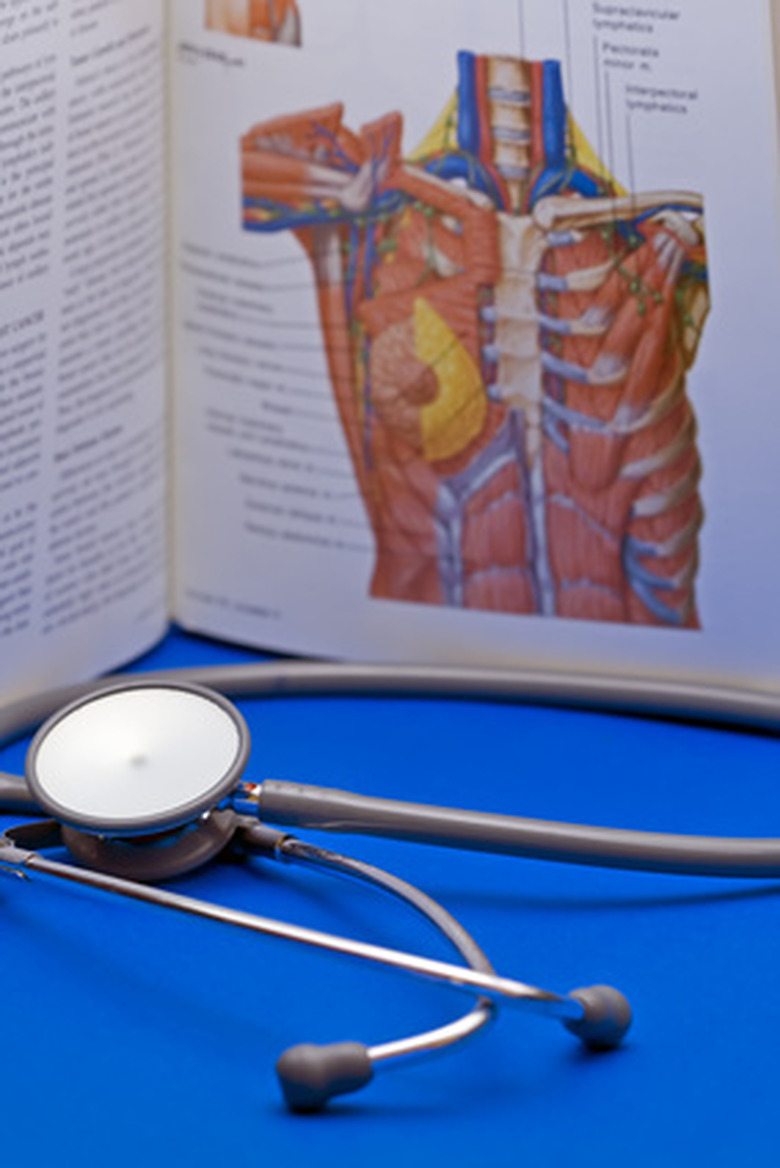What Is The Purpose Of Breathing?
Pulmonary ventilation, the medical term for breathing, happens when air flows into the lungs during inspiration (inhalation) and out of the lungs during expiration (exhalation). This natural and essential process takes no thought and usually very little effort. But, breathing is much more complex than simply saying, "Breathe in, breathe out."
Define Breathe vs Respiration
Define Breathe vs Respiration
Breathing moves oxygen-rich air in and out of the lungs. Respiration describes how cells use oxygen to release energy, generating and expelling carbon dioxide as a waste product.
Breathing
Breathing
It may not be self-evident, but breathing is actually an integral part of the metabolic process. Most multicellular organisms on Earth, even those without lungs or lunglike structures, use the abundant supply of oxygen and carbon dioxide in the atmosphere to help fuel the production of energy. This is true for plants and insects and many other forms of life.
Role of Oxygen
Role of Oxygen
When humans breathe in, both lungs on either side of the heart expand outward to allow oxygen to enter. Within the lungs are small sacs composed of clusters of alveoli, which are wrapped in blood vessels. Here oxygen diffuses into the blood in exchange for carbon dioxide, binding to hemoglobin. Four oxygen molecules can bind to a single red blood cell. The oxygen is then pumped to the heart through the pulmonary artery and sent out to the rest of the body.
Oxygen and Metabolism
Oxygen and Metabolism
Soon oxygen enters tissue capillaries and passively diffuses into each cell due to the lower concentration of oxygen inside of the cell membrane. Oxygen is delivered to the mitochondrion, which is kind of like the powerhouse of the cell, at the very end of the metabolic process. Having already driven the production of ATP, the main energy carrier, free electrons and hydrogen ions (charged particles of hydrogen) need something to bind to, or else the entire process will grind to a halt. These particles can freely bind to oxygen, creating water as a byproduct.
Carbon Dioxide
Carbon Dioxide
Earlier in the metabolic process, carbon dioxide was created as a byproduct due to the constant rearrangement of molecules. Carbon dioxide must then leave the body, taking a journey that is very much the opposite of the one that oxygen took. The gas diffuses out of the cell and directly into the blood plasma via capillaries as a form of bicarbonate ion. When it reaches the lungs, it is exchanged for oxygen and then expelled into the air.
Rate of Breathing
Rate of Breathing
Because energy production is a nearly constant activity in the cells, breathing is nearly constant, too (some animals like whales can conserve oxygen for long periods of time). This means that stressful and strenuous activity increases the rate of breathing and blood flow in order to get oxygen into the cells for higher energy production. This rate is carefully regulated by the brain.
Cite This Article
MLA
Stutsman, Jacob. "What Is The Purpose Of Breathing?" sciencing.com, https://www.sciencing.com/purpose-breathing-6318507/. 14 August 2018.
APA
Stutsman, Jacob. (2018, August 14). What Is The Purpose Of Breathing?. sciencing.com. Retrieved from https://www.sciencing.com/purpose-breathing-6318507/
Chicago
Stutsman, Jacob. What Is The Purpose Of Breathing? last modified March 24, 2022. https://www.sciencing.com/purpose-breathing-6318507/
